Visit bustling 1967 Kitchener in this archival footage
It’s no secret – the City of Kitchener has changed drastically over the last several decades.
Whether is more skyscrapers, more businesses or more people, University of Waterloo archival footage from 1967 is visual evidence of how much Kitchener has transformed.
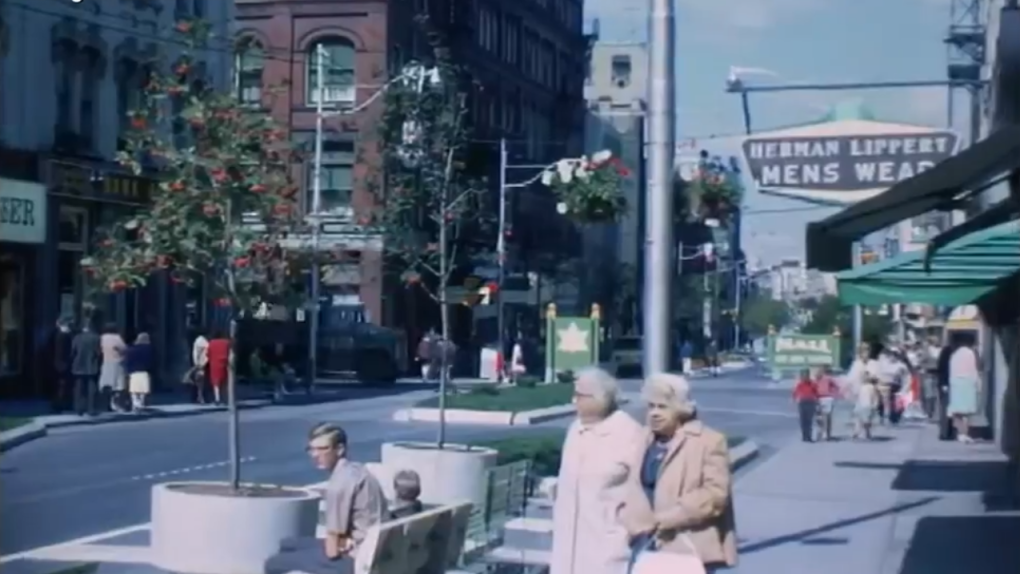 Bustling downtown Kitchener appears in archival footage from 1967. (Source: University of Waterloo Archives, Morgan Cameron Ross)
Bustling downtown Kitchener appears in archival footage from 1967. (Source: University of Waterloo Archives, Morgan Cameron Ross)
“The biggest [change] is of course this 38-storey [building], or however many floors it is, just here in the downtown area,” said longtime Kitchener resident Kenneth Boulter.
He’s also noticed the arts scene gain more prominence, along with a more diverse population.
“That mix is good,” Boulter said.
Watching the footage brought back childhood memories for Berry Vrbanovic, Kitchener’s mayor.
“My family moved to Kitchener 10 years after that original video was shot,” said Vrbanovic.
He thinks back to the old Eaton’s building, which is now condos, or the Goudies Department Store, which is now THEMUSEUM.
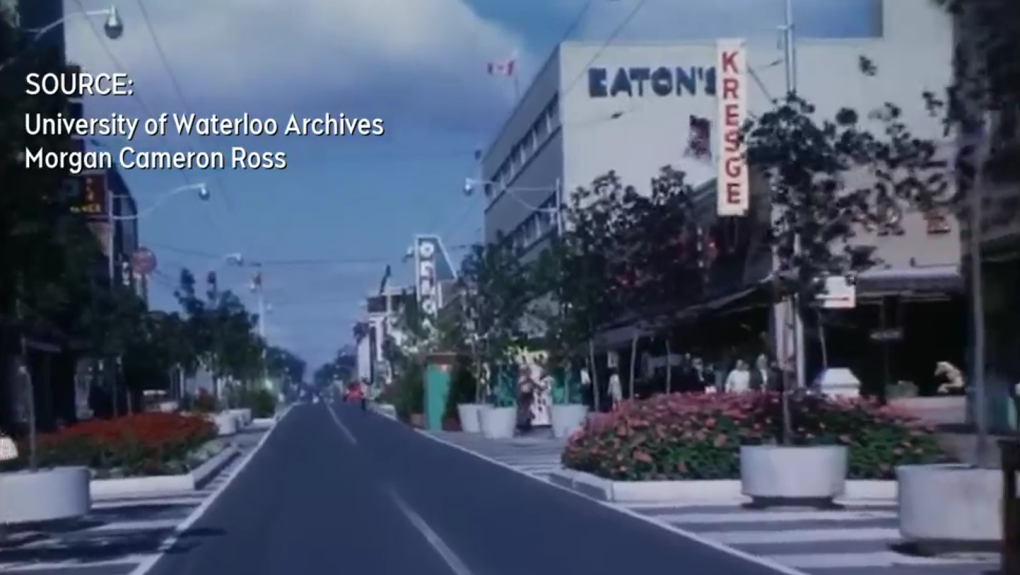 The old Eaton's building, pictured here, is now condos. (Source: University of Waterloo Archives, Morgan Cameron Ross)
The old Eaton's building, pictured here, is now condos. (Source: University of Waterloo Archives, Morgan Cameron Ross)
When you take a closer look at the footage, you may see more similarities than differences.
You can spot restaurants that extended patio seating onto the sidewalk or roadside.
“It also shows how what comes around goes around in terms of history. Things that have really only come back to fruition even as recently as the pandemic,” said Vrbanovic.
 Families enjoy a street patio. (Source: University of Waterloo Archives, Morgan Cameron Ross)
Families enjoy a street patio. (Source: University of Waterloo Archives, Morgan Cameron Ross)
University of Waterloo’s Canada Research Chair in Urban Change and Social Inclusion, Brian Doucet, says in the years after the video was taken, the city saw shopping malls open up further away from King Street in downtown Kitchener.
The introduction of parkways and expressways also contributed to the decline of downtown retail, he says.
“We’re seeing downtown Kitchener becoming a bit of a residential cluster the way it wasn’t 50-odd years ago,” said Doucet.
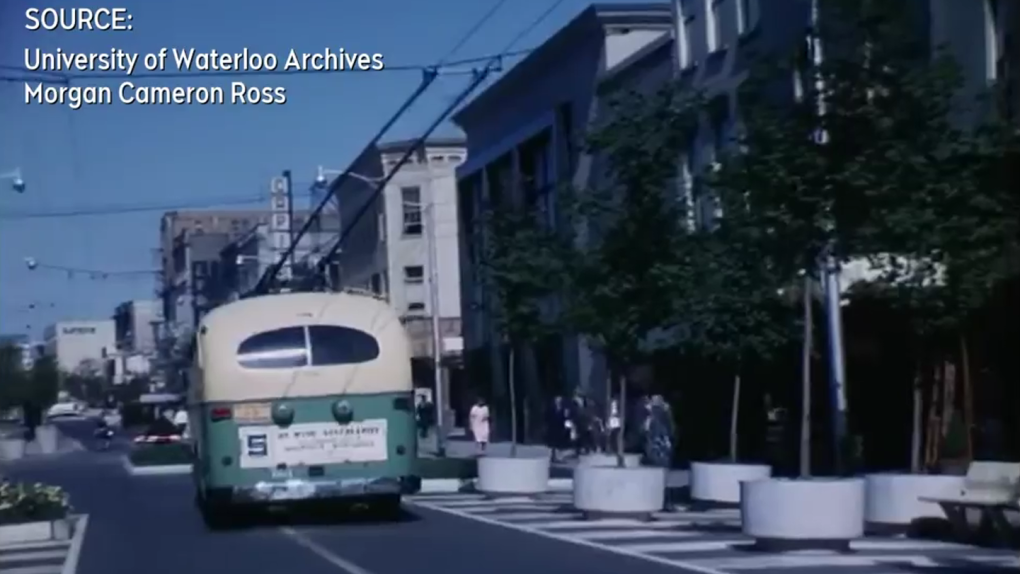 A streetcar rolls down King Street. (Source: University of Waterloo Archives, Morgan Cameron Ross)
A streetcar rolls down King Street. (Source: University of Waterloo Archives, Morgan Cameron Ross)
It’s also hard to ignore the trolley-buses, which were eventually abandoned. But they’ve seen a resurgence of sorts with the ION.
“Now we’ve seen the same central spine, where those trolley-buses ran, is now home to the light rail. And we can see the impact that’s having,” Doucet said.
So while many may say history repeats itself, this may be an example of a city taking inspiration from itself in order to lay the foundation for a better future.
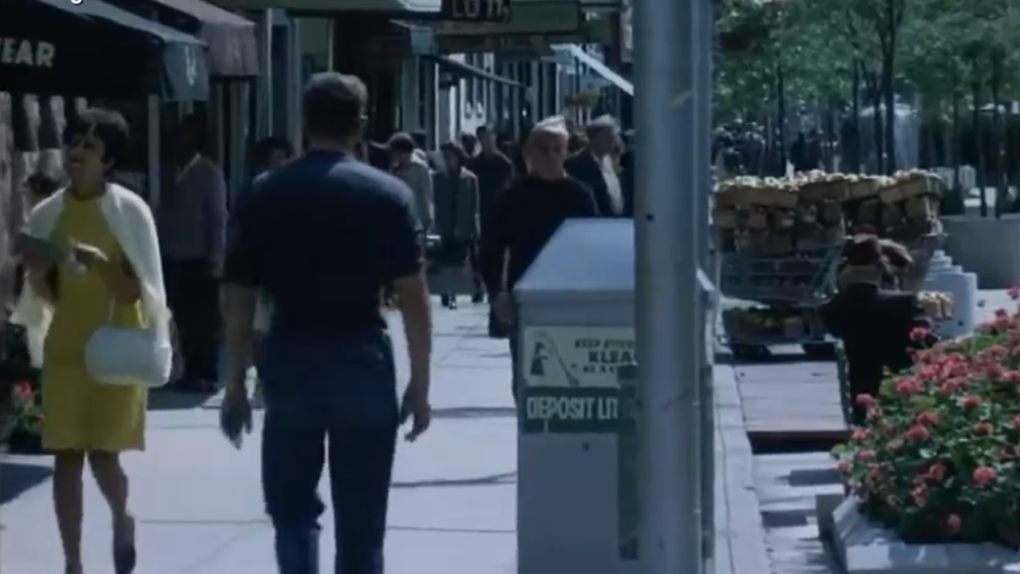 60s fashions are also on display in the archival footage. (Source: University of Waterloo Archives, Morgan Cameron Ross)
60s fashions are also on display in the archival footage. (Source: University of Waterloo Archives, Morgan Cameron Ross)
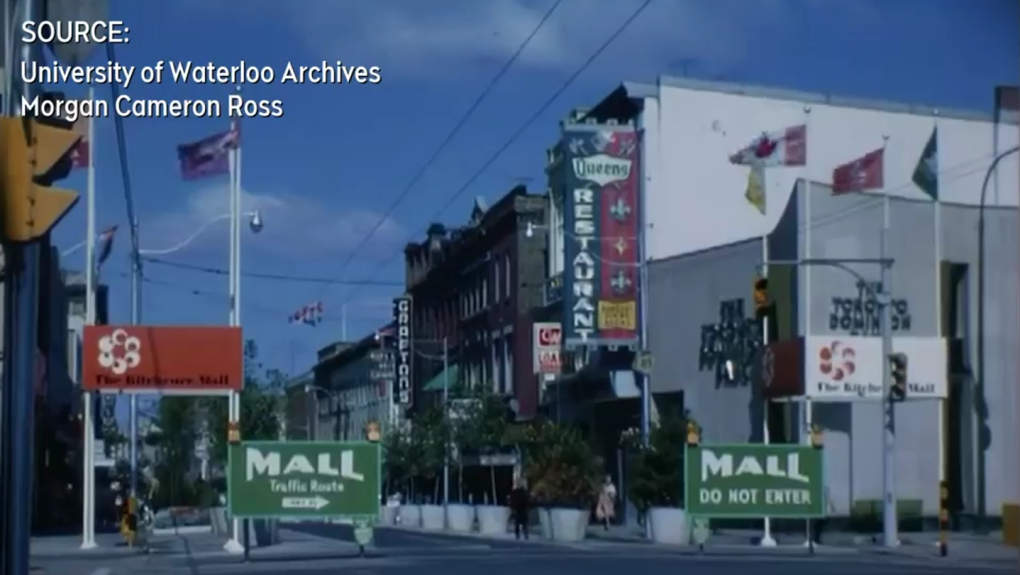 The opening of malls outside the downtown core and the creation of parkways and expressways contributed the decline of downtown retails, says Brian Doucet from the University of Waterloo. (Source: University of Waterloo Archives, Morgan Cameron Ross)
The opening of malls outside the downtown core and the creation of parkways and expressways contributed the decline of downtown retails, says Brian Doucet from the University of Waterloo. (Source: University of Waterloo Archives, Morgan Cameron Ross)
CTVNews.ca Top Stories

Canada could impose tariffs on U.S. steel, orange juice in response to Trump threat
Canadian officials are narrowing a list of American products to target in the event the federal government must respond to U.S. tariffs on Canadian goods, CTV News has confirmed.
Convicted Jan. 6 rioter arrested as fugitive in Whistler, B.C.
An American citizen convicted of participating in the Jan. 6, 2021, riot on Capitol Hill who said he was seeking asylum in Canada has been arrested as a "fugitive from U.S. justice," according to authorities.
Can the U.S. really make Canada the 51st state?
Talk of Canada becoming the 51st American state has raised an existential question on this side of the border: Could it be done? Could the maple leaf make way to the stars and stripes? According to several experts, it may be possible, but not painless.
L.A. wildfires continue to devastate area, Canada prepared to offer expertise
A series of wildfires are searing through the Los Angeles area, forcing many to evacuate their homes. Here's everything that happened throughout Jan. 8.
'True when I said it, true today': former Canadian PM Harper pushes back aganst Trump on social media
Former Canadian Prime Minister Stephen Harper doesn’t find president-elect Donald Trump’s jibes about Canada becoming the 51st U.S. state very amusing.
Ontario Premier Doug Ford says he is 'OK' after OPP vehicle he was in was 'sideswiped' in Highway 401 collision
Ontario Premier Doug Ford was uninjured after an OPP vehicle he was travelling in was involved in a collision on Highway 401 earlier today.
At least 60 University of Guelph students sick as 'cluster of illness' hits residence
The University of Guelph is dealing with what they are calling a ‘cluster of illness’ among students living in residence.
Energy minister 'committed' to consumer carbon tax as he considers Liberal leadership
Energy and Natural Resources Minister Jonathan Wilkinson says he would be 'committed' to the consumer carbon tax should he become Liberal leader and prime minister, despite the policy’s unpopularity.
New ranking suggests Canada passport among 'top 5 losers' in the world
A new global ranking may raise doubts about Canada's reputation of being open to other countries.
































